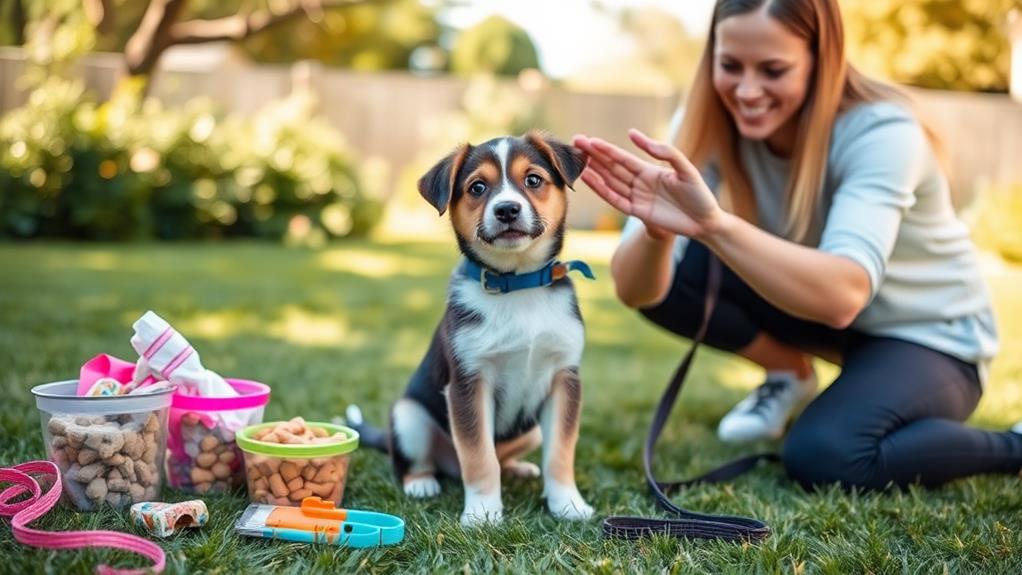When you're training your dog, start by understanding their behavior. Pay attention to body language and comfort levels, adjusting your approach as needed. Use consistent commands and gestures, ensuring everyone in the household is on the same page. Positive reinforcement is key—reward good behaviors with treats or praise right away. Socialize your dog early by exposing them to new environments and experiences, always supervising those interactions. Finally, be patient and persistent; dogs take time to learn. Stick with it, and you'll raise a well-behaved companion. There's so much more to uncover about effective training!
Understand Your Dog's Behavior
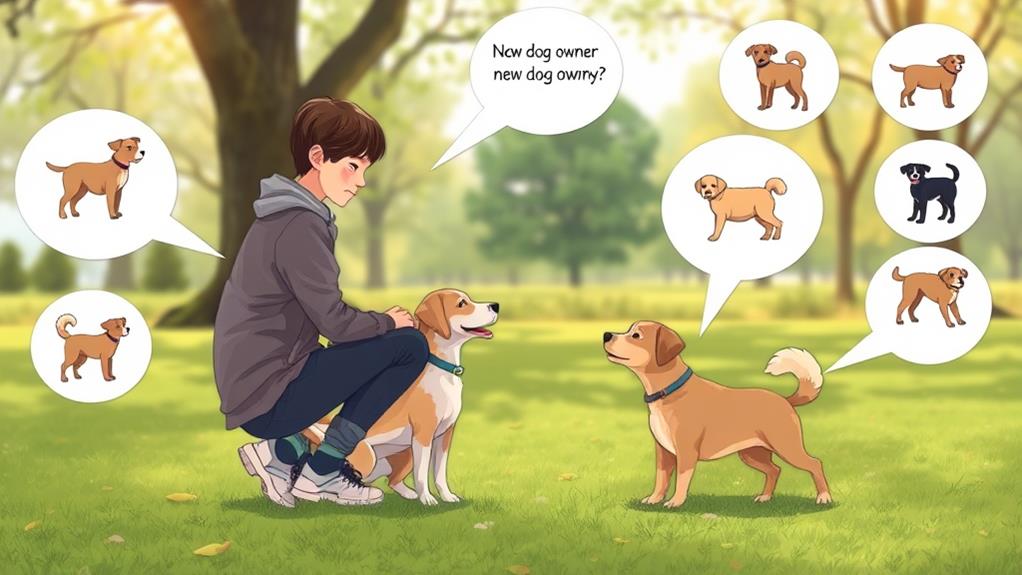
Understanding your dog's behavior is indispensable for successful training and building a strong bond. Every dog has its own personality, and recognizing these traits helps you tailor your approach.
Pay attention to body language; a wagging tail doesn't always mean happiness. Sometimes, it indicates excitement or even anxiety.
Notice how your dog reacts in different situations. Is your pup shy around strangers, or do they become overly excited? These responses reveal their comfort levels and can guide you in how to introduce new experiences. For instance, if your dog shows fear, take it slow and provide reassurance.
Also, consider your dog's energy levels. High-energy breeds need more exercise and mental stimulation, while others may prefer a leisurely stroll. Adapting your routine to meet these demands will lead to a happier, healthier dog.
Establish Consistent Commands
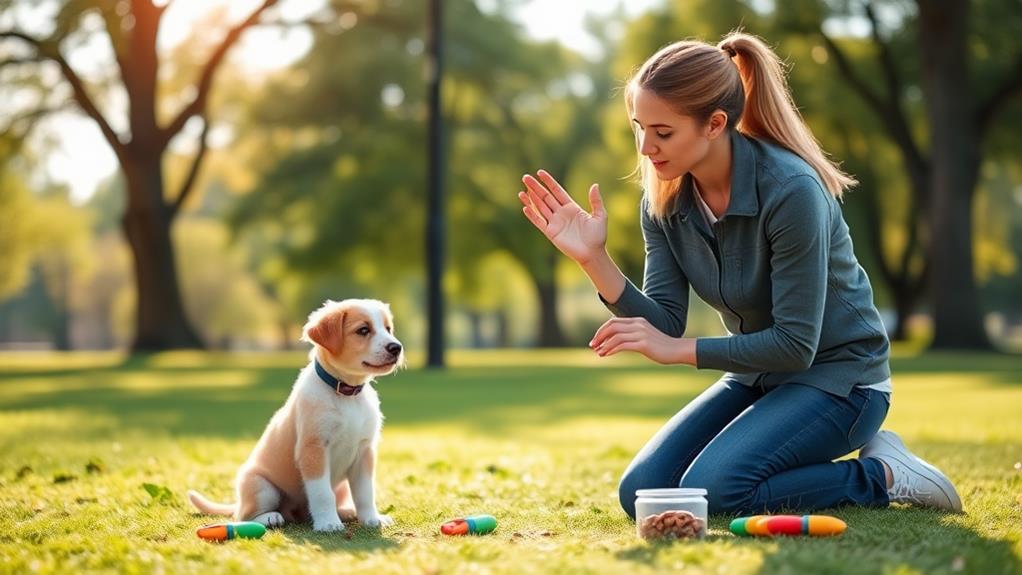
Your dog's success in training hinges on establishing consistent commands. When you use the same words and gestures every time, your pup will learn faster and understand what you expect from them. Consistency helps reduce confusion, making training more effective.
Here's a simple guide to help you create and maintain consistent commands:
| Command | Gesture |
|---|---|
| Sit | Raise your hand up |
| Stay | Open palm forward |
| Come | Wave your arm |
| Down | Point to the ground |
Choose one word for each command and stick to it. For example, if you decide to use "come," don't switch to "here" later on. Make sure everyone in your household uses the same commands, too. This way, your dog won't get mixed signals.
Practice these commands regularly and in different environments to reinforce learning. Remember, the goal is to have your dog respond promptly every time you give a command. Stay patient and diligent, and soon enough, your furry friend will master their commands!
Use Positive Reinforcement
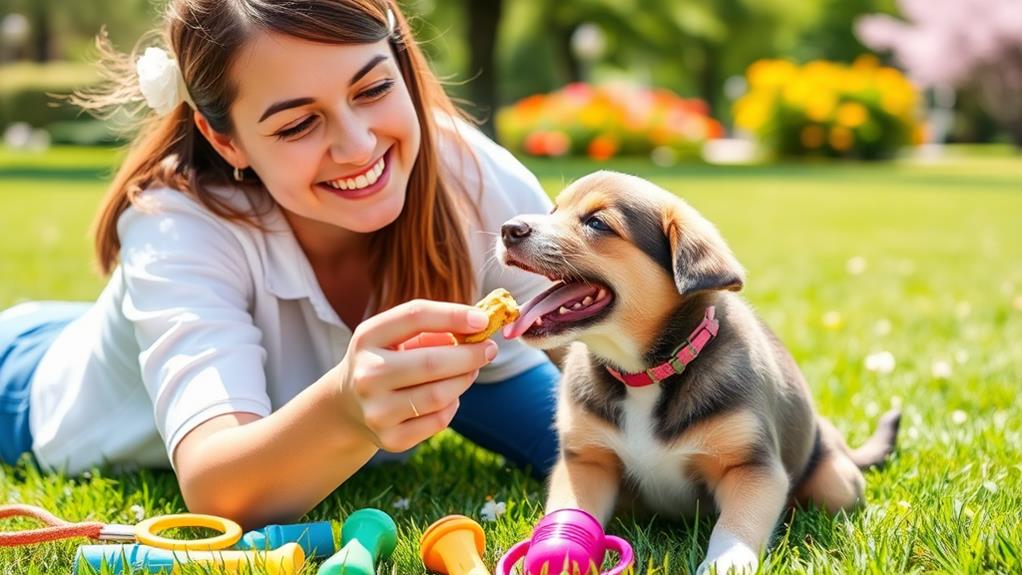
Alongside establishing consistent commands, using positive reinforcement is a powerful method to encourage desired behaviors in your dog. This technique involves rewarding your pup with treats, praise, or playtime whenever they perform a behavior you want to encourage. It's effective because dogs naturally respond to rewards, making them more likely to repeat the behavior.
Start small by rewarding your dog for basic commands like "sit" or "stay." When your dog obeys, immediately offer a treat or verbal acclaim. Be enthusiastic! Your excitement reinforces the behavior and strengthens your bond. Timing is vital; reward them right after they perform the desired action to help them connect the dots.
Consistency is key. If you reward them for sitting today, do the same tomorrow. This helps establish a clear understanding of what you expect. Avoid using punishment or negative reinforcement, as it can create fear and anxiety, making training more difficult.
Socialize Your Dog Early
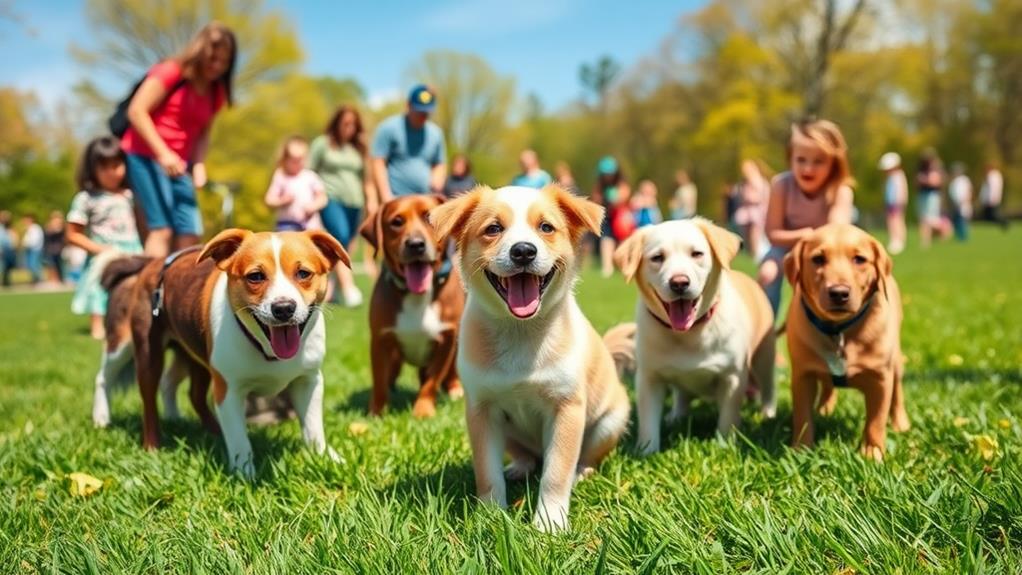
Socializing your dog early is crucial for their development and helps prevent behavioral issues down the line. It's imperative to expose your pup to various environments, people, and other animals to build their confidence and adaptability. Start this process as soon as you bring your dog home, ideally during their critical socialization window, which is between 3 and 14 weeks of age.
Take your dog on walks in different neighborhoods, visit parks, and attend puppy playdates. These experiences allow your dog to learn how to interact appropriately with others and understand different sights, sounds, and smells. Make certain to supervise their interactions to guarantee they're positive. If your dog seems anxious or overwhelmed, give them a break and try again later.
Don't forget to reward your dog with treats and praise during these outings, reinforcing positive behavior. Gradually increase the level of challenge by introducing them to various situations, like busy streets or gatherings. Remember, the goal is to create a well-adjusted dog who feels comfortable in different settings. By socializing your dog early, you're setting the stage for a happy, confident companion.
Be Patient and Persistent
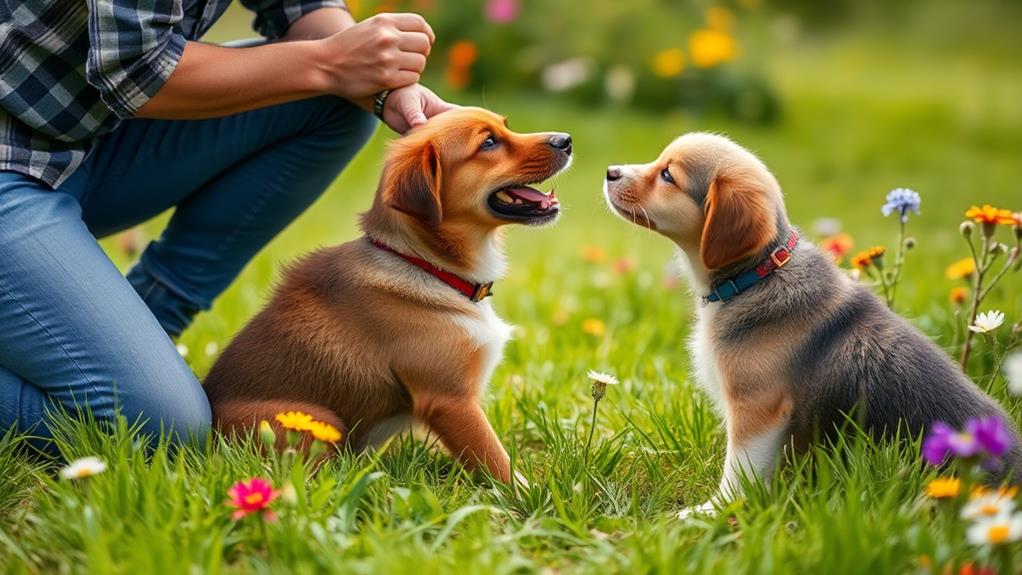
Building a strong foundation through early socialization is just the beginning of your journey as a dog owner. As you embark on training, remember that patience and persistence are your best allies. Dogs don't learn overnight. They need time to grasp commands, understand boundaries, and adjust to new experiences.
When your pup struggles with a command, it's easy to feel frustrated. Instead of giving up, take a deep breath and try again. Break down commands into smaller steps. Reward progress, no matter how small, to keep your dog motivated. Celebrate the little victories, and don't rush the process.
Consistency is key. Practice regularly, and establish a routine that reinforces learning. Keep training sessions short and engaging to hold your pup's attention. If things aren't going well, change your approach rather than abandoning the effort.
Stay positive! Your attitude sets the tone for your dog. If you're calm and upbeat, your pup will feel more at ease. Remember, every dog is unique, and some may take longer to learn than others. Embrace the journey, stay committed, and enjoy the bond you're building together.
Frequently Asked Questions
What Age Is Best to Start Training My Puppy?
You can start training your puppy as early as eight weeks old. At this age, they're keen to learn and absorb information quickly. Just keep sessions short, fun, and positive to encourage their enthusiasm and engagement!
How Can I Tell if My Dog Is Bored?
If your dog's displaying disinterest, destructive behavior, or excessive energy, it's likely bored. Watch for wandering, whining, or restless roaming—these signals suggest your pup needs more playtime, mental stimulation, or new activities to engage.
Can I Train My Dog Without Treats?
Yes, you can train your dog without treats. Use praise, toys, or playtime as rewards. Consistency and positive reinforcement are key. Focus on building a strong bond while teaching commands through engaging activities your dog enjoys.
How Long Should Each Training Session Last?
Each training session should last about 5 to 10 minutes. You'll keep your dog engaged and focused without overwhelming them. Short, consistent sessions reinforce learning and make training enjoyable for both of you.
What Common Mistakes Do New Dog Owners Make?
You might overlook consistency in commands, fail to reward good behavior promptly, or expect immediate results. It's easy to underestimate socialization's importance and assume your dog understands your expectations without proper training and communication.
Conclusion
In the journey of dog ownership, remember that every wag of the tail tells a story of progress. By understanding your dog's behavior, using consistent commands, and embracing positive reinforcement, you're laying the groundwork for a lasting bond. Socializing early and maintaining patience will not only shape your pup into a well-behaved companion but also enrich your shared adventures. So, as you commence/begin/start/initiate this rewarding path, think of every challenge as a stepping stone to a stronger friendship.

